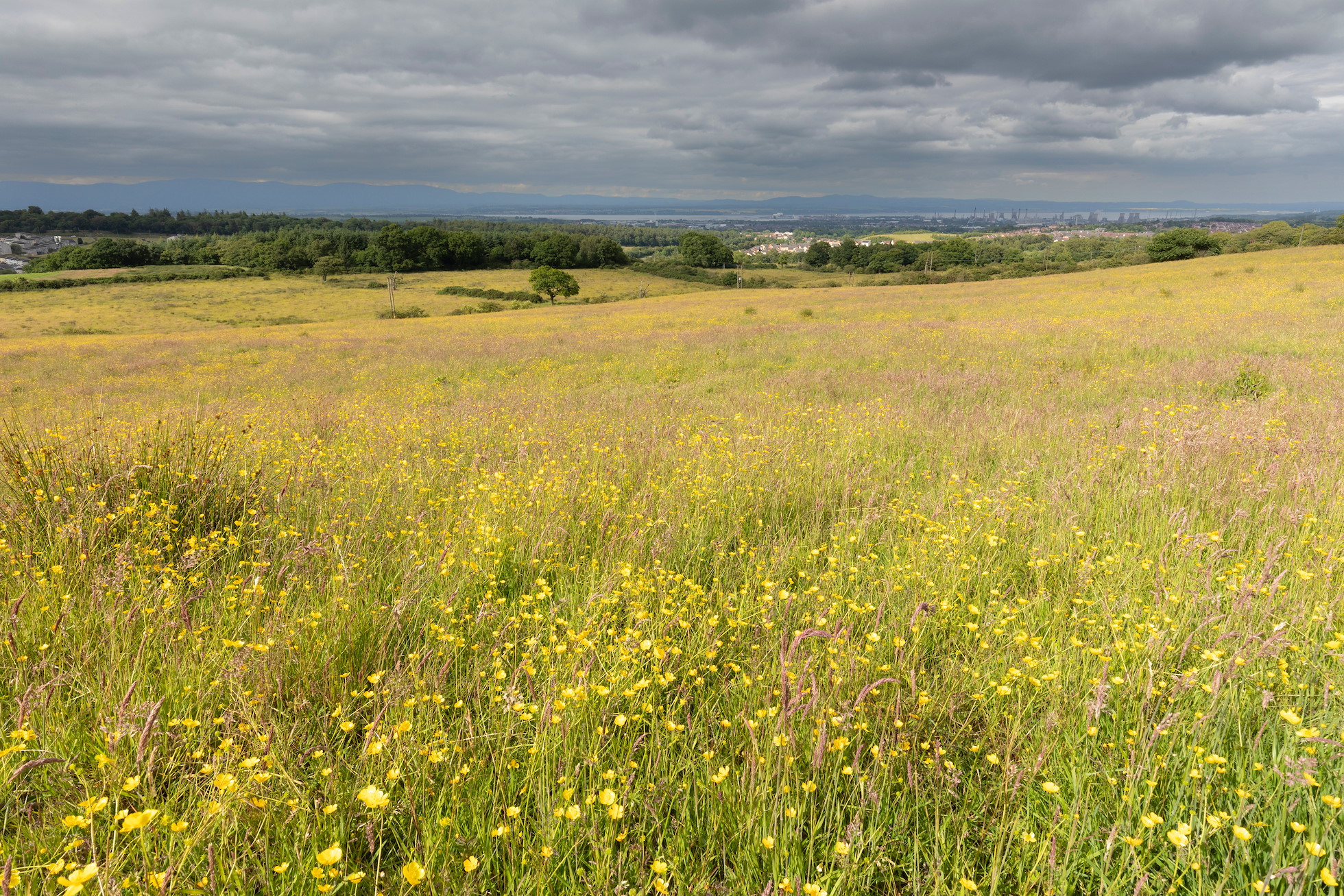Wildflowers bounce back fast thanks to green hay on Falkirk farm
A farm on the edge of Falkirk has seen a dramatic increase in both the diversity and density of wildflowers and grass species just one year after trialling a simple restoration technique using ‘green hay’.

At Pirleyhill Farm on the Callander Estate, survey results found that diversity had more than doubled from 5 to 11 species, while their density had tripled, after fresh grass and wildflowers from a species-rich meadow in Perthshire were spread across the farm’s specially prepared ground in August last year.
As a partner in the Northwoods Rewilding Network managed by rewilding charity, SCOTLAND: The Big Picture, Pirleyhill Farm has been recently transformed into a haven for nature. In the last year alone, the land managers have created 15 ponds, 10 large seed islands – small fenced areas of native trees and plants, set up to help new woodland grow naturally – restored woodland ground flora and are now trialling different ways to create species-rich grasslands at eight sites spanning over three hectares of the farm.
‘These results are extremely encouraging, and a real validation of our commitment to rewilding here at Pirleyhill,’ explains Land Manager, Emma Schneider. ‘Many of us worry about climate change and biodiversity loss, and I feel so lucky to get to decide what to do – or not do – with the land. For me, it’s a huge opportunity to make a positive contribution to our small corner of the country, and I’m excited to see these positive results in such a short timeframe, resounding proof that the green hay technique is a quick and effective way of restoring degraded grasslands.’
Elsewhere on the farm, Emma’s efforts to help nature recover have led to seven times more butterflies, with twice as many species observed compared with the conventionally farmed areas.
‘It’s been inspiring to watch Emma’s ideas take root here at Pirleyhill and to see nature responding so quickly,’ says Estate Manager, Guy Wedderburn. ‘These results show that with a bit of curiosity and the courage to try new approaches, land can bounce back in remarkable ways. As an estate, we’re proud to back that vision and play our part in demonstrating what’s possible for nature recovery.’
‘These are really impressive results, showing that this technique has a rapid, positive impact on restoring nature and boosting biodiversity,’ adds Northwoods Rewilding Officer, Aidan Maccormick, who has supported the team at Pirleyhill Farm on their rewilding journey for the last three years. ‘Green hay is a low-cost, collaborative solution for restoring degraded grasslands to species-rich wildflower meadows – but it’s still a relatively novel approach within rewilding and not yet common practice in Scotland.
‘These results are all the proof we need that the approach can be successfully replicated elsewhere. At a time when pollinator populations are in serious decline across the UK, it’s hugely encouraging to see pretty simple interventions like this helping to turn the tide.’
With almost 100 partners located the length and breadth of Scotland from Shetland to Dumfries and Galloway, the Northwoods Rewilding Network aims to demonstrate how rewilding can be applied across different scales and settings – as well as the range of benefits it can bring for nature, climate and people. As a collaborative network of farms, crofts and community woodlands, it enables land managers of medium-sized landholdings (usually from 100 to 1,000 acres) to share resources and knowledge. For more information, visit https://www.scotlandbigpicture.com/northwoods
ENDS

